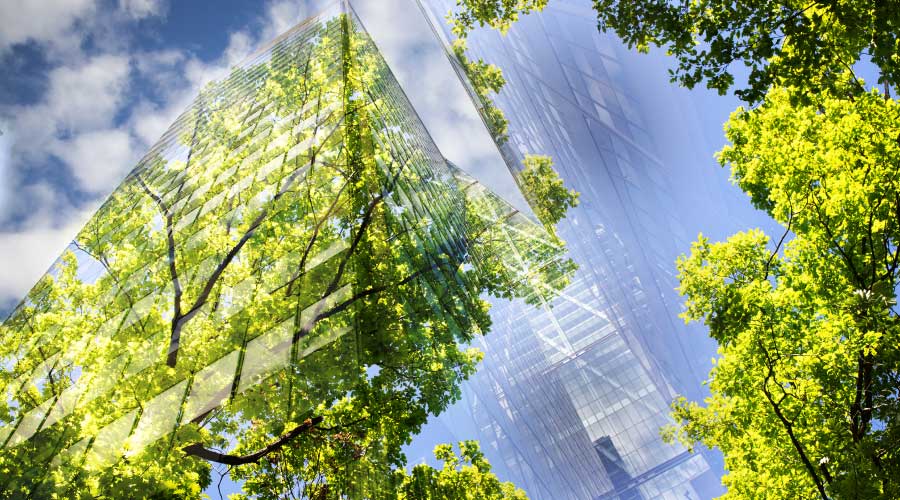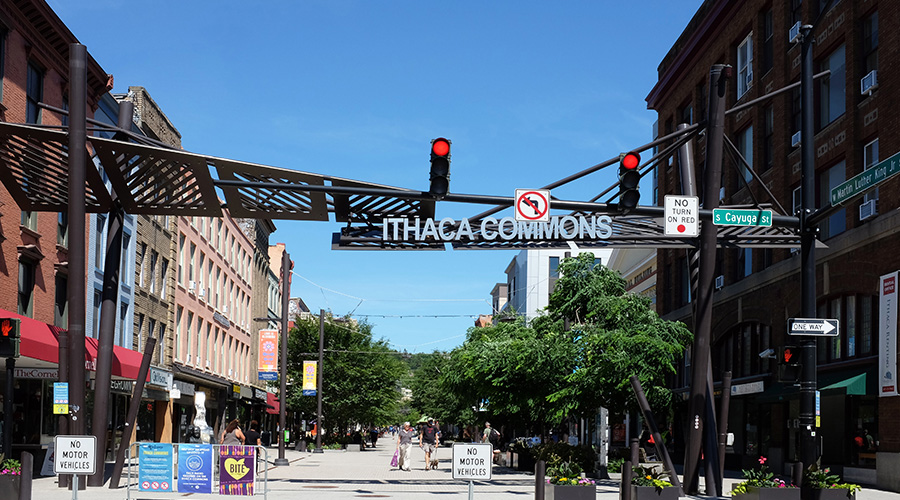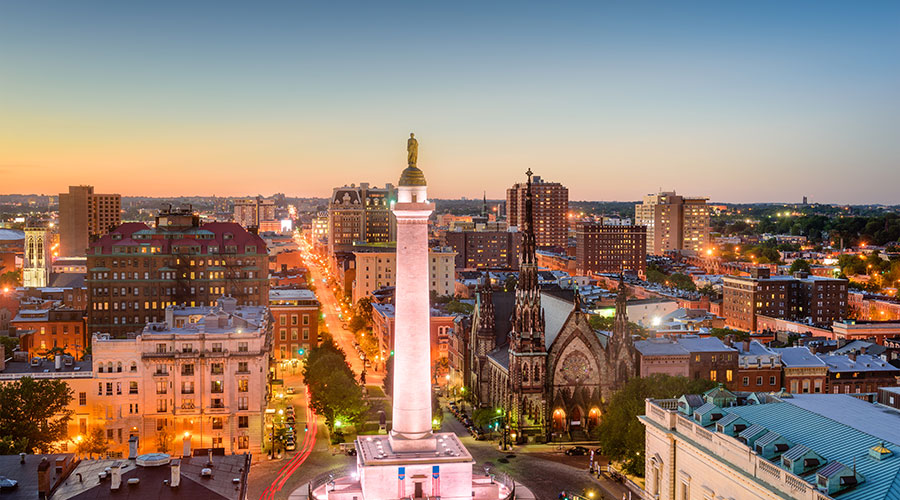Lighting Technology: Wealth of Opportunities
Upgrades using proven efficient technologies can pay for themselves in two to three years in many facilities
Five million non-residential buildings encompass 71 billion square feet of space in the United States, and nearly all of that space requires lighting. In fact, lighting accounts for roughly 20 percent of all electricity used in the United States and up to 40 percent of electricity used in commercial facilities. In a commercial building of approximately 50,000 square feet, about $45,000 is spent on lighting energy each year. Unfortunately, a significant amount of that energy is wasted because most buildings operate with aging, inefficient lighting systems.
In many cases, an upgrade of old lighting systems to state-of-the-art, energy-efficient solutions can cut operating costs, save energy and contribute to an organization’s goal of being environmentally responsible.
“Building owners can save as much as 40 percent on their energy bills and get a two-year payback by investing in a modern lighting system with the latest sustainable technology,” says Evan Gaddis, president and CEO of the National Electrical Manufacturers Association (NEMA).
NEMA and its member lighting companies are challenging facilities professionals to explore the cost-effectiveness and efficiency of lighting systems upgrades through a new initiative, enLIGHTen America.
Aimed at reducing energy use and costs in U.S. commercial, industrial and institutional buildings, the five-year education campaign targets building owners, operators and executives who make decisions about upgrading lighting products in un-renovated buildings. The initiative endeavors to educate them about benefits of modern, high-efficiency lighting solutions.
“Lighting is more than just a switch on the wall. How much more does the average person think about lighting beyond that? We want to change that thinking in the facilities industry,” says Keith T.S. Ward, president and COO of EYE Lighting International of North America, Inc. “enLIGHTen America is an effort to demonstrate how quality lighting creates value through optimal energy cost savings and efficiency, not just in new construction but also in existing buildings. Today’s lighting systems not only save money; they also can improve worker productivity, create a sustainable environment and reduce our nation’s carbon footprint, as well as increase a building’s asset value.”
Increased Savings
The Department of Energy (DOE) has confirmed that lighting products provide the quickest return on investment in terms of energy savings. Following good design and taking full advantage of the best of current technology can help ensure maximum savings.
“The average commercial facility is full of opportunities to replace outmoded lighting systems with more efficient lighting technologies, such as T8 fluorescent lamps, electronic ballasts, compact fluorescent lamps, LEDs, lighting controls and occupancy sensors,” says Susan Bloom, director of corporate communications at Philips Lighting Company and Advance.
“Tens of thousands of companies nationwide have proven that lighting upgrades involving these and other lighting technologies can reduce lighting costs by as much as 30 to 50 percent and reduce total facility energy costs by up to 25 percent,” Bloom says. “Often paying for themselves in two to three years or less, these projects drive returns that typically exceed standard corporate capital hurdle rates. They stand as some of the most financially attractive investments around.”
Based on a facility’s specific circumstances, including the age and condition of the existing lighting system and the upgrade objectives, it’s quite possible to achieve comprehensive gains and enjoy a range of benefits, depending upon the scope of the project.
Benefits run from improved lighting levels and system quality to easier maintenance and support of environmental sustainability efforts. A well-designed upgrade might also enhance the value of a building and even boost employee and tenant satisfaction and productivity.
A preliminary audit of a facility’s lighting system is the best way to get a general estimate of a particular building’s potential for savings. An in-house expert can perform this audit, or the building owner can turn to a qualified local electrical distributor or contractor, energy service company (ESCO), or utility professional to provide a low- or no-cost, no-obligation estimate of the opportunities to save through an upgrade. In fact, the support of a knowledgeable and accredited service provider will enhance the likelihood of reliable projections and also help ensure desired or promised results.
The next step would be a more detailed, investment-grade audit. Though not necessarily offered free of charge, this confirming audit generally includes a comprehensive itemization of the opportunities within a facility. Many times, the audit fee can be applied toward the cost of the actual upgrade. Lighting experts say a detailed audit proposal is critical, as it will outline the terms of the project, the specific products involved, the cost outlay associated with the upgrade, and the achievable energy and cost savings.
“Your available budget will dictate what type of lighting upgrade can and should be addressed,” Ward says. “If funds are tight, there are many simple upgrades that can improve energy efficiency but also retain much of the existing system infrastructure. Lamps, ballasts and lighting controls are examples.“
Most lighting manufacturers can provide calculations, depending on the products being considered, to estimate savings and review the feasibility of the proposed upgrade. Many of these calculators can be found on individual company Web sites and also on enLIGHTen America’s Virtual Lighting Web site community (www.nemasavesenergy.org).
Attractive Incentives
Beyond operating cost savings, there’s another factor to sweeten the upgrade process: incentives.
“A variety of financing options are available to help subsidize the up-front cost of upgrades to facilities,” Bloom says. “In some cases, providers, such as utilities and ESCOs, are so confident of the savings driven by lighting upgrades that they will finance the costs of a project and recover the expenses out of the stream of savings generated. Many utilities offer product rebates or other financial incentives to encourage the use of energy-efficient lighting technologies, which further hasten payback periods and boost returns on investment.”
States also may make grants and loans available to qualifying upgrade projects and facilities. The state energy office or a local utility can provide information on available programs and resources and explain how to qualify for these benefits.
There also are national incentives. The Energy Policy Act (EPAct) of 2005, created commercial building tax deductions (www.lightingtaxdeduction.org) that provide further financial incentive for upgraded lighting systems. The incentive covers qualifying energy-efficient lighting technologies installed in new construction and retrofit applications between Jan. 1, 2006 and Dec. 31, 2008, a deadline that currently is under consideration for extension.
“Available on top of the extremely attractive returns the lighting upgrades generate all on their own, these tax-deduction opportunities provide an even more compelling reason for end users to pursue an energy-efficient lighting upgrade today,” Bloom says.
Beyond Energy and Cost Savings
The benefits of replacing dated lighting systems with current technologies are more than simply increased energy efficiency and reduced operating costs. Many facilities still rely on lighting systems that are 10 or even 20 years old, and they are missing much of what today’s state-of-the art lighting systems can deliver.
“Ask yourself this: Would you use a 10-year-old computer?” Ward says. “In the same way computers have changed vastly over the last 10 years, so too have lighting technologies.” Many of today’s top technologies were not available even 10 years ago. For a building constructed or last renovated during that time, there are significant opportunities to improve performance. “An upgrade can bring all sorts of advantages to a building owner in one of these facilities,” says Ward.
A lighting system upgrade enhances building value by improving lighting quality. High-efficiency lighting systems reduce glare, which helps to reduce eyestrain, thus boosting occupant productivity. Thanks to electronic ballasts, fluorescent lights no longer flicker and hum — improving the quality of the commercial facility environment.
“The availability of the market’s current range of high-performing and energy-efficient lighting upgrade options, combined with financial incentives, such as utility rebates, energy grants, loans and tax deductions through EPAct 2005, have made it an excellent time for building owners and managers to reduce their energy and maintenance costs and improve facility lighting quality and ambience,” Bloom says.
Ward agrees. “There is no downside, only an upside, to pursuing lighting upgrades in existing buildings. There’s more to lighting upgrades than simply improving curb appeal and status. The evidence for true savings and efficiency is there and should be all that corporate-level top management needs to make this kind of investment decision,” he says.
Learn More About Lighting
When embarking on a major lighting retrofit in an existing building, the first step is to become familiar with the variety of lighting technologies available.
Remember, lighting accounts for nearly 30 percent of a building’s energy use. An out-of-date lighting system affects the bottom line. An energy-efficient upgrade can:
- Deliver between a 30 to 50 percent return on investment
- Reduce operating expenses
- Improve lighting system quality
- Increase building asset value
The National Electrical Manufacturers Association (NEMA) understands that the facilities industry is looking for guidance on the best ways to upgrade aging lighting systems in existing buildings. For this reason, it has brought together America’s most prominent lighting manufacturers to launch a comprehensive, long-term effort to educate large users of electricity. The enLIGHTen America initiative aims to offer practical, affordable solutions to help reduce energy consumption and expenses.
As part of its national enLIGHTen America campaign, NEMA has created a Web site that provides tips, tools, and information to undertake a lighting upgrade and grow the bottom line.
Visit www.nemasavesenergy.org to discover the first steps to take toward making lasting changes in a facility’s lighting system design.
|
Related Topics:















